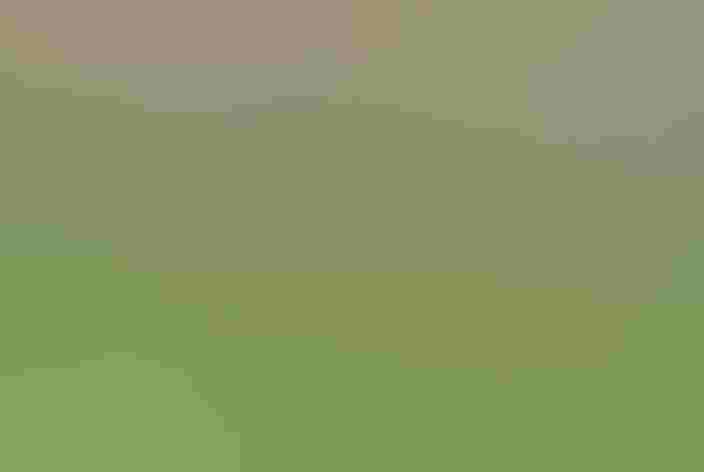Canada Goose
At a Glance
This big 'Honker' is among our best-known waterfowl. In many regions, flights of Canada Geese passing over in V-formation -- northbound in spring, southbound in fall -- are universally recognized as signs of the changing seasons. Once considered a symbol of wilderness, this goose has adapted well to civilization, nesting around park ponds and golf courses; in a few places, it has even become something of a nuisance. Local forms vary greatly in size, and the smallest ones are now regarded as a separate species, Cackling Goose.
All bird guide text and rangemaps adapted from by Kenn Kaufman© 1996, used by permission of Houghton Mifflin Harcourt Publishing Company. All rights reserved.
Category
Duck-like Birds, Ducks and Geese
IUCN Status
Least Concern
Habitat
Coasts and Shorelines, Fields, Meadows, and Grasslands, Freshwater Wetlands, Lakes, Ponds, and Rivers, Saltwater Wetlands, Tundra and Boreal Habitats, Urban and Suburban Habitats
Region
Alaska and The North, California, Eastern Canada, Florida, Great Lakes, Mid Atlantic, New England, Northwest, Plains, Rocky Mountains, Southeast, Southwest, Texas, Western Canada
Behavior
Direct Flight, Formation, Swimming
Population
7.100.000
Range & Identification
Migration & Range Maps
Historically, each local population of Canada Goose followed rigid migratory path, with traditional stopovers and wintering areas. Today many geese in urban areas and on refuges are permanent residents. Other populations have changed routes or wintering areas as habitats have changed.
Description
Both sexes; male slightly larger — Length: 2 ft 6 in-3 ft 10 in (76 cm-1.2 m); wingspan 4 ft 2 in-5 ft 7 in (1.3-1.7 m); weight: 6 lb 9 oz-19 lb 13 oz (2.9-8.9 kg). The basic pattern of the Canada Goose is unmistakable, with white chinstrap on black head and neck. Different populations vary greatly in size and body color (from white-chested to very dark). Compare to Cackling Goose.
Size
About the size of a Heron
Color
Black, Brown, Gray, White
Wing Shape
Fingered, Long
Tail Shape
Rounded, Short, Square-tipped
Songs and Calls
Rich musical honking.
Call Pattern
Flat, Simple
Call Type
Croak/Quack, Raucous
Habitat
Lakes, ponds, bays, marshes, fields. Very diverse, using different habitats in different regions; always nests near water, winters where feeding areas are within commuting distance of water. Nesting habitats include tundra, fresh marshes, salt marshes, lakes in wooded country. Often feeds in open fields, especially in winter. In recent years, also resident in city parks, suburban ponds.
Sign up for Ě˝»¨ľ«Ńˇ's newsletter to learn more about birds like the Canada Goose
Behavior
Eggs
4-7, sometimes 2-11. White, becoming nest-stained. Incubation is by female, 25-28 days; male stands guard nearby.
Young
Parents lead young from nest 1-2 days after hatching. Young are tended by both parents, but feed themselves. Age at first flight varies, usually 7-9 weeks, tending to be longer in the largest forms.
Feeding Behavior
The Canada Goose forages mostly by grazing while walking on land; also feeds in water, submerging head and neck, sometimes up-ending. Feeds in flocks at most seasons.
Diet
Consists almost entirely of plant material. Feeds on very wide variety of plants. Eats stems and shoots of grasses, sedges, aquatic plants, also seeds and berries; consumes many cultivated grains (especially on refuges, where crops planted for geese). Occasionally eats some insects, mollusks, crustaceans, sometimes small fish.
Nesting
Canada Geese may mate for life. Male defends territory with displays, including lowering head almost to ground with bill slightly raised and open, hissing; also pumps head up and down while standing. Nest site (chosen by female) is usually on slightly elevated dry ground near water, with good visibility. Much variation; may nest on cliff ledges, on muskrat houses, in trees, on artificial platforms. Nest (built by female) is slight depression with shallow bowl of sticks, grass, weeds, moss, lined with down.
Conservation
Conservation Status
The Canada Goose species as a whole is probably still increasing: responds well to management on wildlife refuges, and has become a common resident of city lakes and parks in many areas. Some distinctive populations are scarce or declining.
Climate Threats Facing the Canada Goose
Choose a temperature scenario below to see which threats will affect this species as warming increases. The same climate change-driven threats that put birds at risk will affect other wildlife and people, too.










